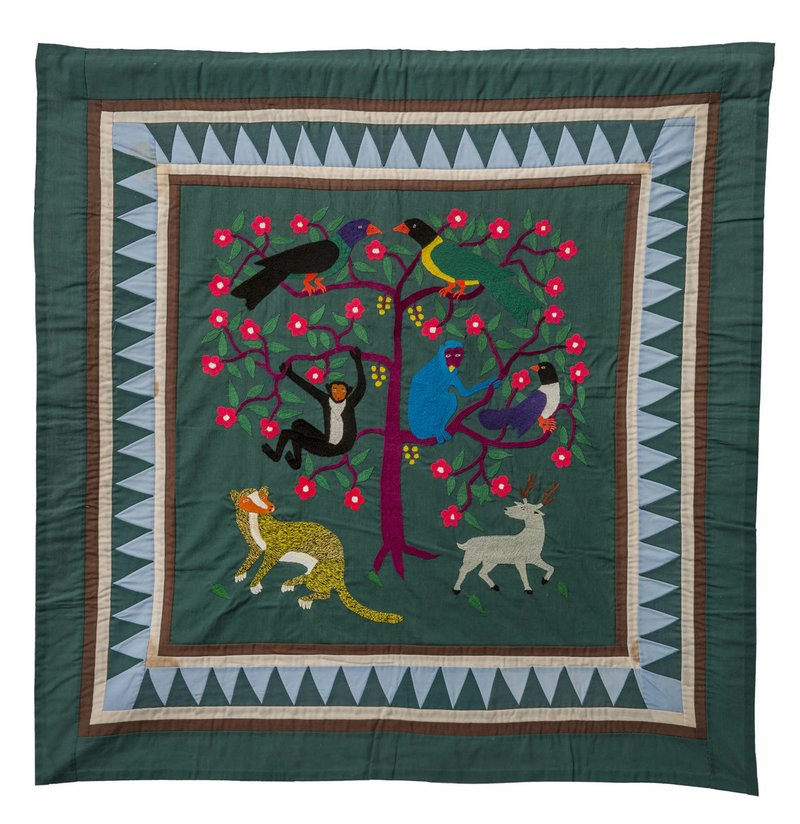A national exhibit featuring traditional Hmong textiles will be on display at John Brown University from Feb. 21 through March 15.
The opening reception for "Cloth as Community: Hmong Textiles in America" is planned for 6 to 7:30 p.m. at the Windgate Gallery. The event is free and open to the public, and will include local Hmong guest speakers, including Lou Cha, assistant professor of Christian ministry and formation at the university, as well as traditional Hmong food.
The exhibit features 28 textile pieces -- flower cloths, embroidered story clothes and wearable pieces such as a baby carrier and a funeral coat -- as well as educational materials, according to Bobby Martin, gallery director and professor of visual arts.
"Hmong flower cloth (or paj ntaub) is one of the world's great textile traditions and an excellent example of cloth as community," a press release from the university states. "Despite its deep roots in Hmong culture, this complex art was not widely known outside Asia until after the Vietnam War, when Hmong refugees arrived in the United States. The works illustrate the profound relevance of textiles as infrastructure in the Hmong culture, an art form that shifted as it adapted to fit new realities."
During the Vietnam War, Hmong people supported U.S. objectives in Laos, according to the Minnesota Historical Society website, www.mhns.org. By the end of the war, tens of thousands of Hmong soldiers and civilians were killed and more than 120,000 people became refugees in their own homelands, the website states.
Many of the Hmong people migrated to the U.S. after the war, settling in Minnesota, the website states. There is also a large community of Hmong people in Northwest Arkansas, Martin said.
Hmong women traditionally produce complex clothing that establish clan identity through abstract geometric designs, created by embroidery, applique, reverse applique and indigo batik, the release states.
Originally, textiles were created for family and ceremonial use, and were not sold. However, in refugee camps and beyond, the sale of textiles became an important source of income for families, and the patterns began to evolve to depict a new life in America or nostalgia for the pastoral life left behind, such as animals in the jungle, scenes of village life or illustrated Hmong folk tales with English text, the release states.
"I really see the gallery generally, but the exhibitions that we get, as a way to show our students other ways of making art and also just an opportunity to introduce some diversity, not just in the way the art is made, but especially cultural diversity," Martin said.
The exhibit will be a great opportunity to see how art is ingrained in Hmong culture, he said.
"It's not just something they do to get art in a gallery, it's part of who they are," Martin said. "I like how it really kind of shows that diversity, how universal art is and how different people groups make different kinds of art and what it means to them"
"Cloth as Community: Hmong Textiles in America," is organized and toured by ExhibitsUSA, a national part of Mid-America Arts Alliance, the release states. Carl Magnuson, a cultural anthropologist, first curated the exhibition in 1999 by working with a Hmong refugee community. Geraldine Craig, department head of art at Kansas State University, who has published more than 100 essays on contemporary art and Hmong textiles, made recent curatorial updates to the exhibit.
The Windgate Gallery is open from 8 a.m. to 4 p.m. Monday through Friday and from 2 to 4 p.m. on Sunday or by special arrangement. For more information, call 479-238-8561 or visit jbu.edu/art/gallery/.
General News on 02/17/2019
